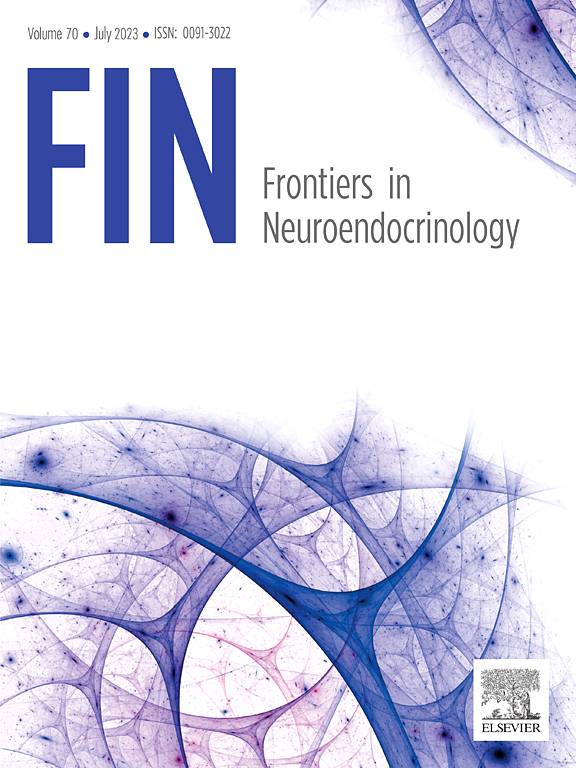内侧杏仁核的神经回路:对社会处理和性别差异的洞察
IF 6.7
1区 医学
Q1 ENDOCRINOLOGY & METABOLISM
引用次数: 0
摘要
杏仁核是大脑边缘系统的重要组成部分,对处理社会刺激和调节应激反应至关重要。在其各种神经元核中,内侧杏仁核(MeA)仍然是人类研究最少的一个。MeA在通过信息素接收来自嗅觉系统的输入以及来自下丘脑、海马体和奖励系统等关键区域的输入方面起着关键作用。这使得MeA能够将外部刺激与生物体的内部状态相结合,微调社会互动、内分泌反应和先天行为。神经科学的最新进展强调了MeA的性别差异以及它们如何影响行为和环境感知。了解这些大脑结构的性别差异,如啮齿动物的MeA,对于将这些知识应用于人类至关重要,并有助于弥合我们对精神健康障碍的理解和治疗方面的差距,精神健康障碍在患病率和表现上往往因性别而异。本文章由计算机程序翻译,如有差异,请以英文原文为准。
The medial amygdala’s neural circuitry: Insights into social processing and sex differences
The amygdala, a critical part of the limbic system, is essential for processing social stimuli and regulating stress responses. Among its various neuronal nuclei, the medial amygdala (MeA) remains one of the least studied in humans. The MeA plays a key role in receiving inputs from the olfactory system through pheromones, as well as from crucial areas such as the hypothalamus, hippocampus, and reward system. This allows the MeA to integrate external stimuli with the organism’s internal state, finetuning social interactions, endocrine responses, and innate behaviors. Recent advances in neuroscience have highlighted the sex differences of the MeA and how they influence behavior and environmental perception. Understanding these sexspecific variations in brain structures, like the MeA in rodents, is vital for applying this knowledge to humans and could help bridge gaps in our understanding and treatment of mental health disorders, which often differ between sexes in both prevalence and presentation.
求助全文
通过发布文献求助,成功后即可免费获取论文全文。
去求助
来源期刊

Frontiers in Neuroendocrinology
医学-内分泌学与代谢
CiteScore
13.30
自引率
6.80%
发文量
62
审稿时长
68 days
期刊介绍:
Frontiers in Neuroendocrinology (FIN) publishes a wide range of informative articles including comprehensive reviews, systematic reviews, opinion pieces, and meta-analyses. While the majority of reviews are invited, we also embrace unsolicited reviews and meta-analyses, as well as proposals for thematic special issues, provided they meet our rigorous quality standards. In addition, we encourage authors to submit commentaries that concisely present fresh ideas or offer further analysis to delve deeper into the implications of an article published in our journal.
 求助内容:
求助内容: 应助结果提醒方式:
应助结果提醒方式:


